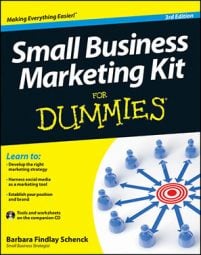Customers decide to buy based on their perception of the value they’re receiving for the price they’re paying. As a small business owner, you must understand your customer's decision-making process so that the price you charge for your product reflects what your customer thinks your offering is worth. If nothing distinguishes your product, it falls into the category of a commodity, for which customers are unwilling to pay extra.
If a customer thinks your price is too high, expect one of the following:
The customer won’t buy.
The customer will buy but won’t feel satisfied about the value, meaning you win the transaction but sacrifice the customer’s goodwill and possibly the chance for repeat business.
The customer will tell others that your products are overpriced.
Before you panic over a customer calling your product or service high-priced, keep in mind that the dissatisfied customer’s negative word-of-mouth is only bad news if others respect the person’s opinions regarding price and value. It’s often better to lose the business of a cherry-picking bargain hunter than to sacrifice your profit margins trying to price to that person’s demanding standards.
If your prices are on the high end, though, be certain that the quality, prestige, and service — the value — that you offer is commensurate with your pricing. Also realize that it’s possible to underprice your offering. If a prospect thinks your product is worth more than its price tag, expect one of the following:
You may sacrifice the sale if the prospect interprets the low price as a reflection of a second-rate offering.
You may make the sale, but at a lower price (and lower profit margin) than the customer is willing to pay, leaving lost revenue and possibly customer questions following the transaction.
The customer may leave with the impression that you’re a discounter — a perception that may steer future opinions and purchase decisions.
Unless you aim to own the bargain-basement position in your market (a dangerous strategy because some other business can always go lower), you’re better off providing excellent value and setting your prices accordingly.
During the split second it takes for customers to rate your product’s value, they weigh a range of attributes:
What does it cost?
What is the quality?
What features are included?
Is it convenient?
Is it reliable?
Can they trust your expertise?
How is the product supported?
What guarantee, promise, or ongoing relationship can they count on?
These considerations start a mental juggling act, during which customers determine your offering’s value. If they decide that what you deliver is average, they’ll expect a low price to tip the deal in your favor. On the other hand, if they rank aspects of your offering well above those of competing options, they’ll likely be willing to pay a premium for the perceived value.
Customers match high prices with high demands. Remember the sign you used to see in print shops and auto repair garages? “Price, quality, and speed — choose any two”? How times have changed. Today’s customers expect the companies they buy from to offer price, quality, and speed. But here’s the good news: They expect you to be competitive in all three areas but exemplary in only one.
Here are some well-known examples:
Costco = Price
Nordstrom = Service
7-Eleven = Convenience
FedEx = Reliability
BMW = Quality
Price emphasizes the dollars spent. Price is what you get out of the deal. Value is what you deliver to customers. Value is what they care most about and what your communications should emphasize.

